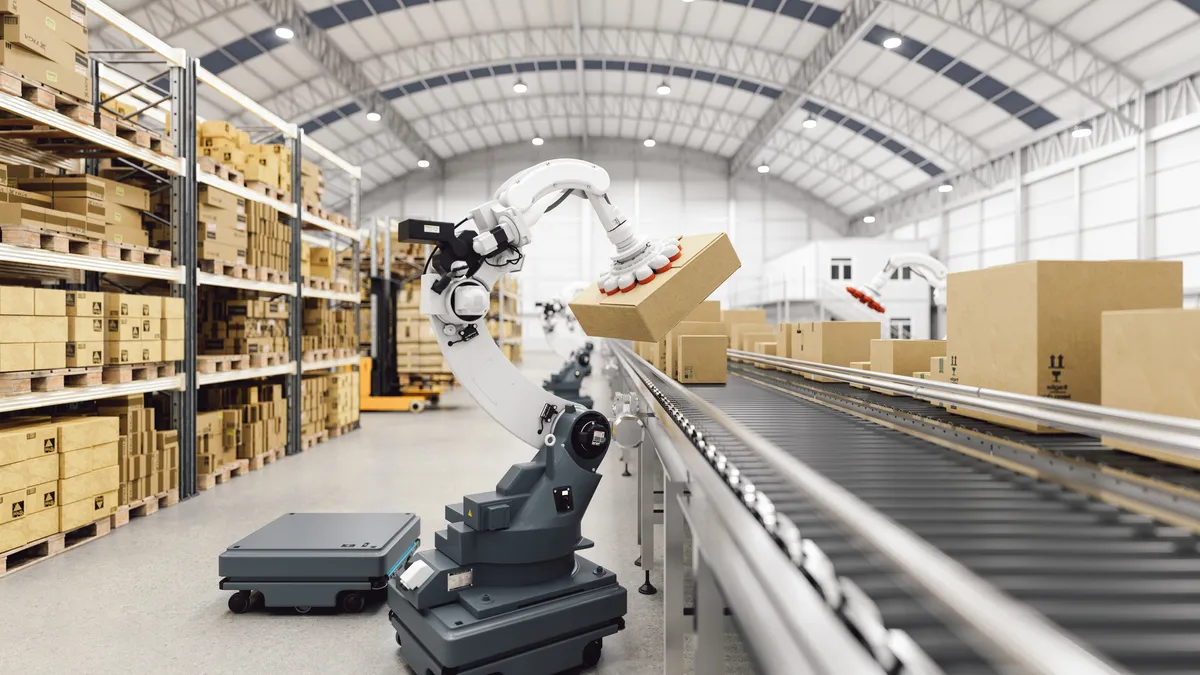With attention on generative AI growing, how to integrate new technologies into their day-to-day is top of mind both for companies and their employees. Technology is set to play a new role as both the needs and wants of the workforce continue to shift.
For executive leaders, that means it’s crucial to strike the right balance when it comes to evaluating these tools — “it’s important not to be fearful of it, but also to understand technology's limitations,” said Eric Emans, CFO of process intelligence and automation firm Nintex.
In order to tap these technologies effectively, CFOs and their C-suite peers need to look at both what they want out of tools like generative AI as well as what their employees are asking for when it comes to technology. When it comes to hiring, for example, the steady development of new technologies is putting a premium on employees who are willing to experiment.
“In the past I think, you've always valued experience — now you actually kind of value the animated, curious mindset and the person that's willing to innovate to solve the problem,” Emans said in an interview.
As a manager, what companies should be searching for is what Emans, who has held the CFO position for the Bellevue, Wash.-based company for just over a year, looks to hire — what he terms as “intellectually curious athletes.”
These are employees who are looking beyond their current roles or projects and towards the ultimate business outcome they are trying to drive, Emans said — something that technology plays a big part in helping to facilitate.
“I think it allows people to be innovative,” he said of technology. “It allows people to be better problem solvers.”
Striking the tech, workforce balance
Automation and generative AI’s potential role in workaday life is swiftly capturing employers’ attention. The number of companies expecting to automate at least some of their workflow grew to 65% this year, compared to 51% three years ago, according to a recent study by Willis Towers Watson, with 28% gearing up for “alternative talent sources,” CFO Dive previously reported.
While executives may be intrigued by the technology’s hype, implementing it effectively can be a taller ask, the WTW survey found — only one-third of companies said they had “effectively managed the risks associated with the dynamics of work” including digitization and alternative talent sources.
For companies looking to get ahead of the curve, paying close attention to what one’s employees want as well as how new technologies can help them achieve key outcomes is essential. For Emans, as an outcome-oriented CFO, the first step in achieving this balance is to step back and listen to what problems employees are trying to solve.
“I don't like to be the office of no,” he said. “I do like to say, ‘Hey, what are you trying to do?’”
Seamlessly welding new technologies into a changing workforce also means looking beyond the lure of a shiny new digital tool and paying attention to what employees themselves value — though workers across geographies, demographics or life stages may place value on different things or have different goals, the importance of a solid company culture is key to attracting and retaining talent, Emans said.
“It’s really about, ‘Hey, how can I show up to a company, how can I collaborate, how can I make an impact,’ and that's where I think technology is going to play the biggest piece for us, is creating those opportunities,” he said.
Tech as the remote, in-person bridge
For Nintex, creating new opportunities means using technology to “improve the quality of somebody's work life so that they can actually focus on impactful things,” Emans said.
That doesn’t mean technology should be used to replace all of the old ways businesses used to run, but rather should be thought of as an enhancer. Nintex, for example, is taking a renewed look at where it should be prioritizing as a business following its CEO transition in early March, when Avalara veteran Amit Mathradas succeeded Eric Johnson in the role.
Bringing key people together during in-person meetings, where the company can be more strategic with its problem-solving, is key to this process, Emans said. At the same time, leaders need to grow more comfortable with their workforce using emerging technologies as Nintex — an international company — continues to be “highly remote.”
Nowadays, for example, “anybody can go out with a credit card and buy their project management software or some data tool,” Emans said.
This is empowering — though as CFO, Emans stressed the importance of cybersecurity and controls around these types of purchases — and enables the freedom to solve problems in different ways than were previously available for companies, he said. Remaining open to new technologies and use cases is important for CFOs, Emans said.
“I think the biggest thing is you can't fear it,” Emans said of generative AI in particular. “You’ve got to play with it. And then I think it earns you credibility in the room to say, ‘Hey, this is what this is, this is how I played with it. I want to know more.’”




















